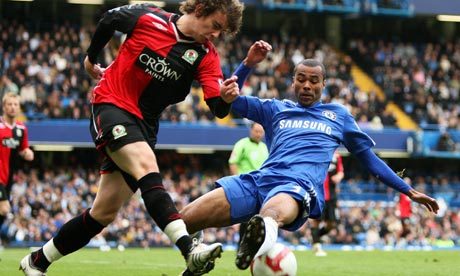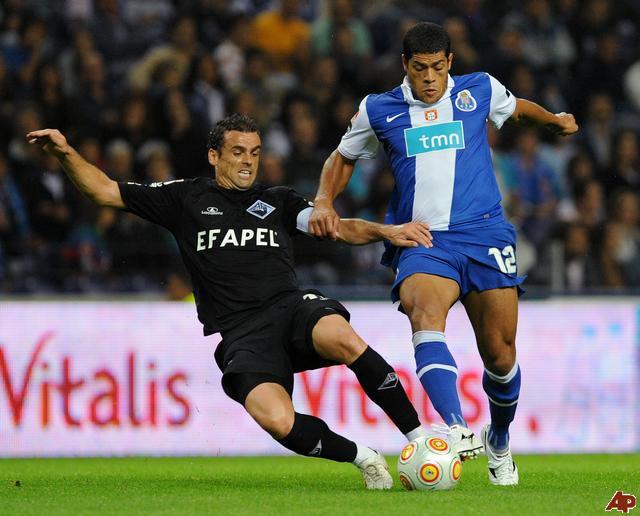-
Recent Articles
3 at the back and the 4-4-2 Diamond
 Last week Chelsea v Liverpool became the biggest tactical talking point of the season. Liverpool revived the the 3 man defence that Kenny debuted against Stoke. While with the introduction of Torres for £50m...
Last week Chelsea v Liverpool became the biggest tactical talking point of the season. Liverpool revived the the 3 man defence that Kenny debuted against Stoke. While with the introduction of Torres for £50m...How To Set Up A Back Four
 Last year, I wrote a guide about how to play a simple 4-4-2. One of the major components of that is the back four. In fact, most modern formations build upon four defenders; two full backs and two centre...
Last year, I wrote a guide about how to play a simple 4-4-2. One of the major components of that is the back four. In fact, most modern formations build upon four defenders; two full backs and two centre...Building Your Defence: Full Backs
 The modern full back is quickly becoming one of the most important players on the team sheet, infact even back in the days of Brian Clough, fat ed' argued that because of the space these players get in the final...
The modern full back is quickly becoming one of the most important players on the team sheet, infact even back in the days of Brian Clough, fat ed' argued that because of the space these players get in the final...False Nine Tactics
 When we think about modern football trends, we think about the fall of the 4-4-2, the introduction of inverted wingers and the rise of the 4-5-1. But there is one other tactical rise that seems to have...
When we think about modern football trends, we think about the fall of the 4-4-2, the introduction of inverted wingers and the rise of the 4-5-1. But there is one other tactical rise that seems to have...An Open Letter To The Football Manager Community
 To view Sports Interactive's response, click here FM-Britain will no longer be producing regular content. Sports Interactive have objected to our content model of charging for annual strategy guides,...
To view Sports Interactive's response, click here FM-Britain will no longer be producing regular content. Sports Interactive have objected to our content model of charging for annual strategy guides,...
JOIN 11,611 READERS - SUBSCRIBE NOW TO OUR FOOTBALL MANAGER NEWSLETTER
Get the latest FM news & best community content delivered directly to your e-mail inbox!
June 21, 2007
Tactic Tweaking II
Helpful tweaks for fine-tuning tactics
The tweaking articles are simple collections of bite-sized topics that cover several settings and ideas that may help you to fine tune your tactics. These little ideas can be very helpful and, if implemented correctly, boost the success of your tactics immensely.
Contents
D-line
Time wasting
Tempo
Offside trap with deeper lines
D-line
When and where to adjust the d-line in game
Sometimes it can be helpful to apply minor changes to the d-line in game. If the opposition is playing very fast forwards and you notice that your defenders are turned over and over despite giving according opposition instructions, it can be helpful to drop by a notch or two, as well if defending a lead. You can support and increase this effect by keeping the fullbacks back and set their forward runs to rarely.
A change by only one or two notches will often result in an increased defensive stability. However, don’t use dramatic changes. If you are facing an immense amount of pressure you will have chosen the wrong approach and should make a complete switch.
Conversely, it can be helpful to increase the pressure on very deep sitting opponents to raise the d-line slightly.
Time wasting
When, how much. Can there be too much, not enough?
If the team is not able to keep possession and always looking for a quick shot, often off target, it may be helpful to make them play more patiently and increase time wasting slightly. However shots off target should not be the only measure of failure, since they could as well be related to tempo settings, creative freedom and long shots.
If defending a lead, increasing time wasting slightly (if you do not intend to kill the game) also can be very helpful since it will give your players more time with the ball and hence increase your possession.
As with adjusting the d-line, you should only apply careful changes in-game and not make radical changes if your tactical approach is obviously wrong.
Some say “I don’t like using time wasting, because I don’t think it’s fair”. Please remember this… Time wasting DOES NOT EQUAL taking forever over goal kicks and running it into the corner. Your players only do this when defending a lead against reasonably skilled opposition and with reasonably high time wasting (around 10 or above). You are not going to get a boring team of 1-0 winners by using it as a tactical tool. Of course, if you don’t want them to do this, decrease time-wasting, but keeping it ridiculously low is asking for trouble.
Time wasting is really “haste” to complement tempo (which is “speed”). If you try and play all situations with 1 time wasting, expect a difficult time…
Tempo:
Adjusting the attackingness
Increasing and decreasing the tempo to adjust the ‘attackingness’ of a tactic can have a major effect. Increase when going actively for a goal, decrease when defending a lead. Also it should be mentioned: decreasing tempo can often cure strikers from producing huge numbers of shots off target.
It is possible to build complete tactic sets based on changing the tempo, as garyh has proven with his efforts. This is a short overview of the method:
Any tempo between 1-10 is a control tempo then between 11-20 is an attacking tempo, while 20 is an all out attack with no time wasting.
The slow 8 and 12 tempos are combined with short passing (4) and low creative freedom (4) so players will patrol their zones more.
The faster, more attacking (15) tempo is combined with longer passing (10) and more creative freedom (12) in order to help speed things and give players more freedom to move.
You can read more about these efforts in the thread Tempo Tactic Test
Offside Trap with deeper lines
An unorthodox method of applying the offside trap
Playing the offside trap in away games even without playing a high line can be a very good way to stop the opposition from hoofing up the balls directly out of the defence. This can be recommended if you intend to dominate away games and face teams that prefer a very direct build up play, e.g. like the English old school teams.
This seems to work quite well, especially since the d-line now is only altered if the opposition has the ball. So, while you are in possession, the defenders always will push up as usual, which can be very dangerous and the reason for many defensive errors: you gain possession, the defenders rush up, then you suddenly lose possession, a long ball is hoofed up the pitch and instantly there is a striker free with the ball behind your defence.
Since this risk is given anyway by the engine, it can be used to your advantage by applying the offside trap even if you are playing slightly deeper and away from home. However, you should only use it as long as you are attacking and dominating the game, and provided your defenders have the quality to play offside at all (teamwork, anticipation, decisions, maybe even pace).
Helpful Links
Tempo Tactic Test
Millie’s Comparative Slider Guide
Tactical Bible Credits
Millie, garyh, The next Diaby. Editor: Millie
About The Author: garyh
Download Our Tactical Theorems '10 eBook Absolutely Free

Presenting the most comprehensive tactic design and match strategy guide to the Football Manager series ever created!
Written by FM match engine beta testers, it's 60+ pages of easy-to-read concepts and ideologies for getting your team playing exactly how you want each match! It's been downloaded over 100,000+ times to date!
Find out more information about our tactical eBook
and download Tactical Theorems '10 right now!
Written by FM match engine beta testers, it's 60+ pages of easy-to-read concepts and ideologies for getting your team playing exactly how you want each match! It's been downloaded over 100,000+ times to date!
and download Tactical Theorems '10 right now!



